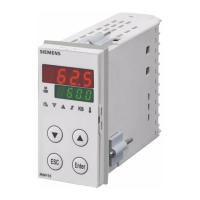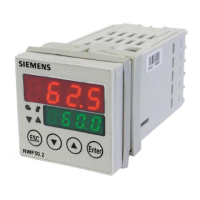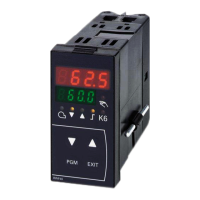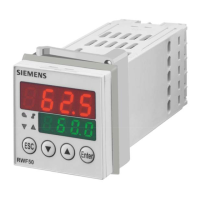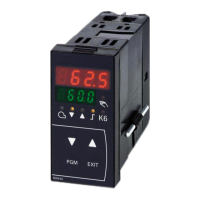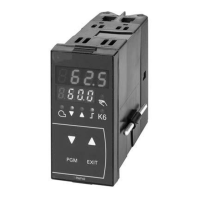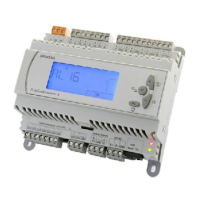17/93
Building Technologies Division User Manual RWF55... CC1U7867en
Infrastructure & Cities Sector 4 Electrical connections 05.11.2013
4 Electrical connections
4.1 Installation notes
- The choice of cable, installation and electrical connections of the controller must
conform to VDE 0100 Regulations for the installation of power circuits with nominal
voltages below AC 1000 V, or the relevant local regulations
- The electrical connections must be made by qualified personnel
- If contact with live parts is possible while working on the unit, the controller must be
disconnected from power supply (all-polar disconnection)
- When connecting the RWF55 to an external PELV circuit, the existing internal SELV
circuit becomes a PELV circuit.
The protection against electric shock hazard through double or reinforced insulation
and voltage limitation is still present.
No connection to protective earth is required.
- Equipment connected to the SELV circuit must have a safe separation from
dangerous contact voltages in accordance with DIN EN 61140 (e.g. through double or
reinforced insulation in accordance with DIN EN 60730-1).
Caution!
When connecting external components to the safety extra low-voltage inputs or
outputs of the RWF55 (terminals 11, 12, 13, 14, 21, 22, 23, 31, 32, D1, D2, DG,
G+, G-, A+, A- and USB port, RS-485- and Profibus interface), it must be made
certain that no dangerous active voltage are introduced to the RWF55.
This can be achieved by using capsulated components with double/reinforced
insulation or SELV components, for example. If not observed, there is a risk of
electric shock.
Caution!
All screw terminals at the rear of the unit must always be properly tightened. This
applies to unused terminals as well.
Caution!
- Fusing on site must not exceed 20 A
- The fuse on the controller side (AC 250 V/1.6 A slow) conforms to IEC 60127-4
- To prevent the relay contacts from welding in the event of short-circuit in the load
circuit, fusing of the output relays must give consideration to the maximum
permissible relay current
Reference!
See chapter 14.3 Controller outputs OutP.
- No other loads may be connected to the controller’s main power supply terminals
- The electromagnetic compatibility and interference suppression levels conform to the
standards and regulations listed under Technical data
Reference!
See chapter 14.5 Electrical data.
- Input, output and supply cables should be routed separately, not parallel to one
another
- All input and output lines without connection to the power supply network must be
shielded and twisted. They must not be run close to live components or live cables.
- The controller is not suited for installation in areas with explosion hazard
- Incorrect settings on the controller (setpoint, data of parameter and configuration
levels) can affect proper functioning of the process or lead to damage.
Safety devices independent of the controller, such as overpressure relief valves or
temperature limiters/monitors should therefore always be provided, and only be
capable of adjustment by qualified personnel. Please observe the relevant safety
regulations. Since self-setting cannot be expected to handle all possible control loops,
the stability of the resulting actual value should be checked
Safety regulations
Connection of
external components
Screw terminals
Fusing
Suppression of
interference
Incorrect use

